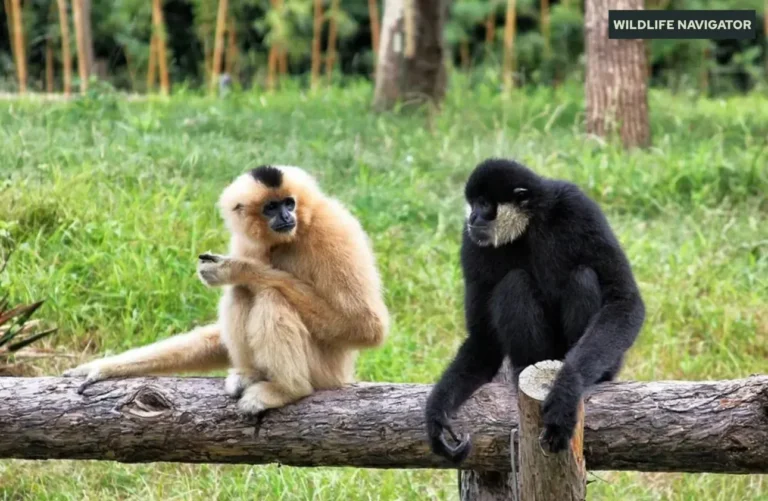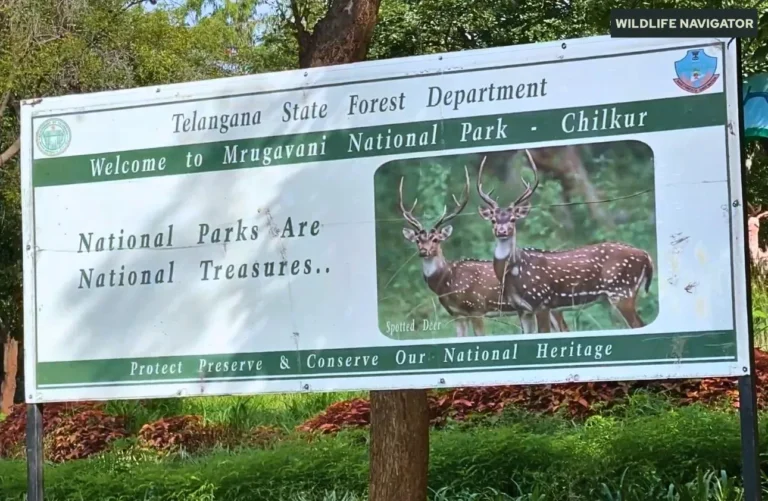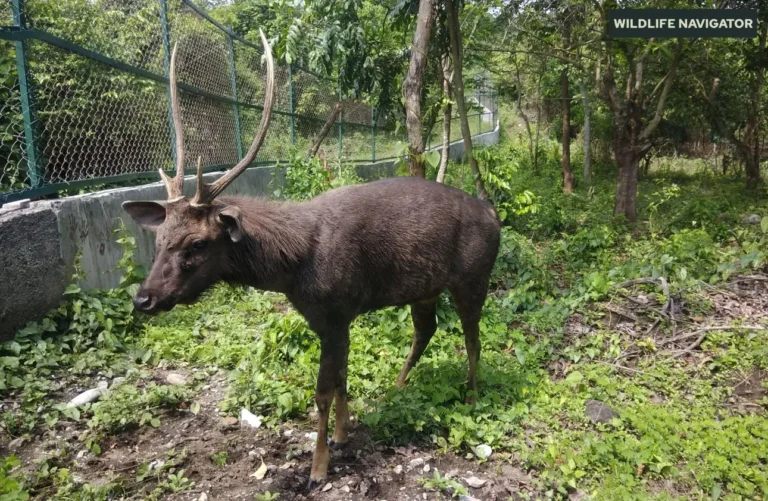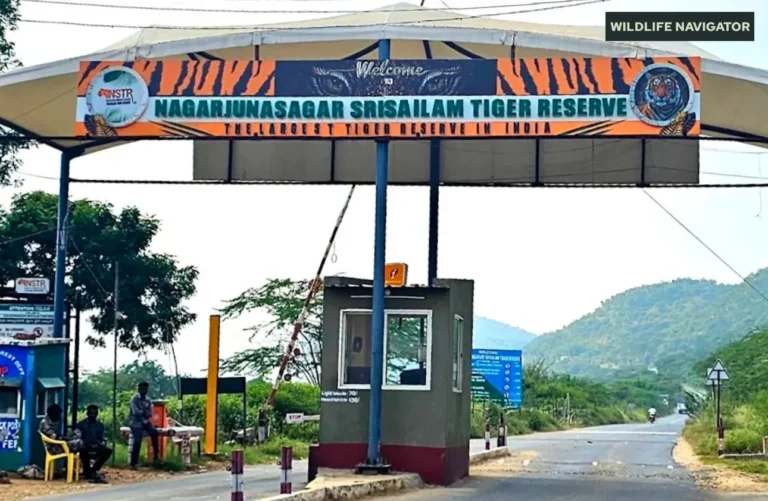Parambikulam Tiger Reserve, Palakkad, Kerala
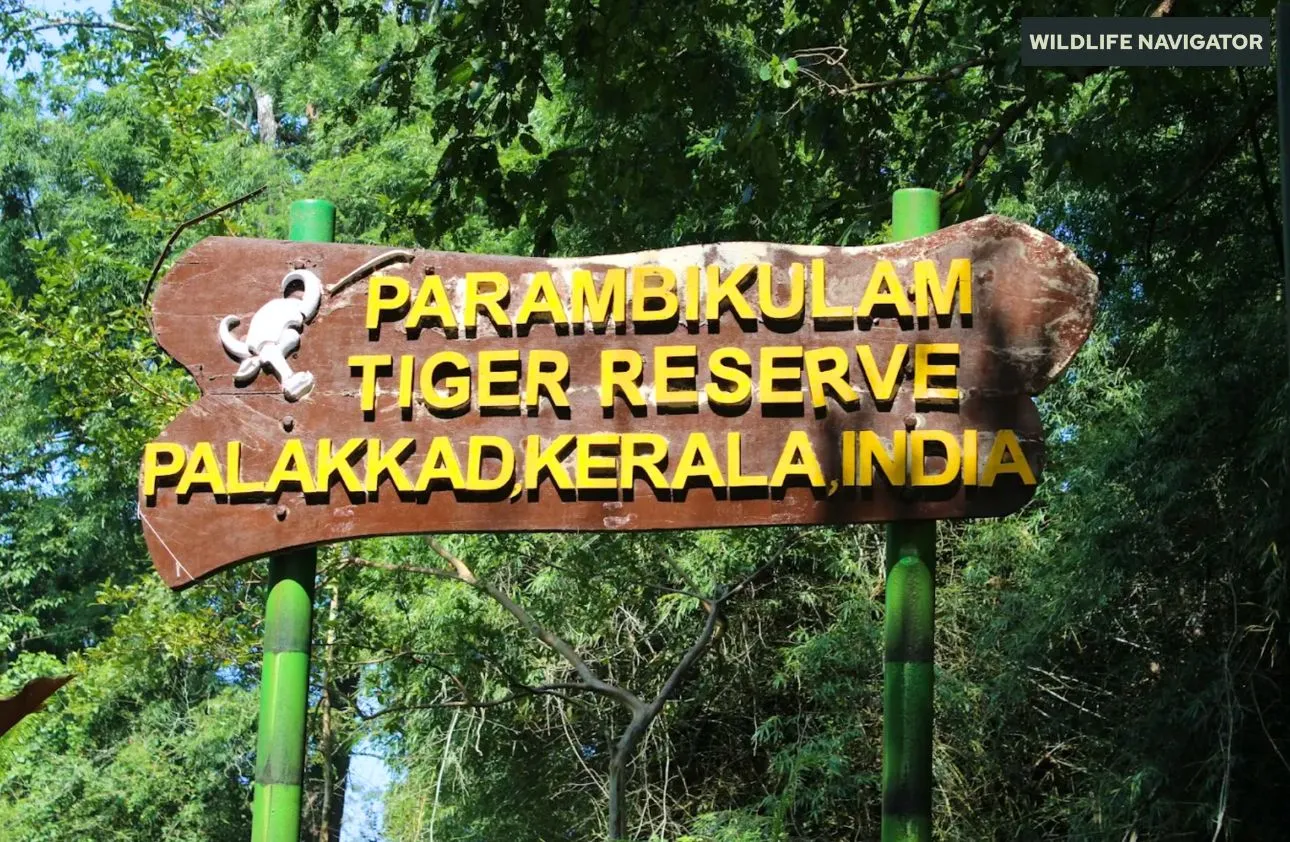
In the lush Western Ghats of Kerala, Parambikulam Tiger Reserve stands as one of India’s finest examples of successful wildlife conservation and eco-tourism. Spanning across the Palakkad district, this biodiverse haven is home to thriving populations of tigers, elephants, leopards, and a rich array of bird species, making it a paradise for wildlife enthusiasts and nature lovers alike.
Recognised as one of the best-managed tiger reserves in India, Parambikulam plays a vital role in safeguarding the delicate ecosystem of the Anamalai landscape. The reserve’s dense forests, shimmering reservoirs, and undulating valleys offer a serene escape into nature while highlighting the balance between conservation and community participation.
What truly sets Parambikulam apart is its sustainable tourism model, where indigenous tribes actively contribute to the reserve’s protection and hospitality. Whether you’re seeking a close encounter with wildlife or a tranquil retreat amid ancient teak trees, Parambikulam Tiger Reserve offers an unforgettable experience that reflects India’s enduring commitment to conserving its natural heritage.
History, Geography & Landscape
Establishment and Evolution
Parambikulam’s journey from a forested haven to a recognised tiger reserve is a remarkable story of conservation success. Initially declared as the Parambikulam Wildlife Sanctuary in 1973, it was later upgraded to a tiger reserve in 2010 under the Project Tiger initiative. The transformation was part of India’s continued effort to expand its network of protected areas and safeguard its dwindling tiger population. Managed by the Kerala Forest Department, the reserve has since gained recognition for its innovative conservation and community-led eco-tourism model.
Geographical Setting
Located in the Palakkad district of Kerala, Parambikulam Tiger Reserve lies in the southern part of the Western Ghats, forming a vital link in the Nilgiri Biosphere Reserve. The reserve shares its borders with Anamalai Tiger Reserve in Tamil Nadu, creating an important contiguous habitat for tigers and elephants. Spanning an area of approximately 643 square kilometres, Parambikulam’s terrain varies from low-lying valleys to high peaks, offering a dramatic range of habitats.
Rivers, Dams, and Scenic Landscape
The reserve is blessed with abundant water sources, including the Parambikulam, Thunacadavu, and Peruvaripallam Dams, which enhance both the scenic beauty and ecological richness of the region. Several rivers, including the Parambikulam and Sholayar, meander through the forests, nurturing its dense vegetation and wildlife. Rolling hills, deep valleys, and shimmering reservoirs make Parambikulam not only a biodiversity hotspot but also a visually stunning wilderness.
Flora & Fauna of Parambikulam Tiger Reserve
Flora of Parambikulam Tiger Reserve
The forests of Parambikulam are a lush showcase of the Western Ghats’ botanical diversity, featuring multiple forest types that support a thriving ecosystem. The reserve is dominated by tropical and subtropical moist broadleaf forests, ranging from evergreen and semi-evergreen to moist deciduous and bamboo-dominated woodlands.
One of its most iconic treasures is the Kannimara Teak, believed to be over 450 years old and recognised as Asia’s largest living teak tree. The area also contains vast stretches of teak and rosewood plantations, along with native species that define its natural character.
Major tree and plant species include:
- Teak (Tectona grandis)
- Rosewood (Dalbergia latifolia)
- Vengai (Pterocarpus marsupium)
- Sandalwood (Santalum album)
- Bamboo and cane varieties
The undergrowth thrives with medicinal herbs, orchids, ferns, and endemic flowering plants, making Parambikulam not only a wildlife paradise but also a botanist’s dream destination.
Fauna of Parambikulam Tiger Reserve
The wildlife diversity here is truly spectacular. As part of the larger Anamalai landscape, Parambikulam provides a safe corridor for several endangered and flagship species.
Mammals
The reserve harbours over 40 species of mammals, including:
- Bengal Tiger
- Leopard
- Asian Elephant
- Gaur (Indian Bison)
- Sloth Bear
- Sambar and Spotted Deer
- Wild Boar
- Nilgiri Langur and Lion-tailed Macaque
Birds
With more than 250 recorded bird species, Parambikulam is a haven for bird watchers.
Notable species include:
- Great Hornbill
- Malabar Grey Hornbill
- Crested Serpent Eagle
- Emerald Dove
- Black Eagle
- Malabar Whistling Thrush
Reptiles and Amphibians
The reptilian world here includes king cobras, pythons, vipers, and monitor lizards, along with rare frogs and toads adapted to the Western Ghats’ moist habitats.
Butterflies and Insects
Over 100 species of butterflies flutter through the reserve, adding vibrant colour to its landscape. Species like the Southern Birdwing and Blue Mormon are often spotted, reflecting the ecological balance of this pristine forest.
Attractions and Activities
Wildlife Safari and Nature Trails
The highlight of visiting Parambikulam Tiger Reserve is its guided jeep safaris, which take visitors deep into the forest to witness its breathtaking wildlife and serene landscapes. These safaris, managed by trained tribal guides, offer the chance to spot elephants, gaurs, leopards, and even the elusive tiger. For those who prefer a slower pace, walking trails and trekking routes such as the Karimala Gopuram Trek and Vengoli Peak Trail provide immersive experiences amidst the dense greenery.
Bamboo Rafting and Boating
A unique adventure in Parambikulam is bamboo rafting across the calm waters of its reservoirs. Gliding over the Parambikulam Dam, visitors can enjoy serene reflections of the forest canopy while spotting birds and aquatic life. Boating facilities are also available at Thunacadavu and Peruvaripallam Dams, blending relaxation with eco-friendly recreation.
Tribal Village Visits and Eco-Lodges
Parambikulam is home to several indigenous tribes whose lives are intertwined with the forest. Visitors can explore eco-villages, learn about tribal traditions, and experience their sustainable way of living. Many of the eco-lodges and forest stays are operated by local tribes under the Parambikulam Eco-Tourism Project, offering authentic hospitality rooted in conservation values.
Bird Watching and Photography
With more than 250 bird species, the reserve is a paradise for bird watchers and photographers. The early morning and late afternoon safaris provide ideal lighting conditions for capturing hornbills, eagles, and colourful flycatchers in their natural settings. The tranquil environment, diverse flora, and wildlife activity make Parambikulam one of the most photogenic reserves in South India.
Iconic Spots and Natural Landmarks
- Kannimara Teak Tree: Asia’s largest living teak, standing as a symbol of longevity and natural grandeur.
- Valley Viewpoints: Offer stunning panoramic views of forested hills and reservoirs.
- Interpretation Centre: Provides insights into the region’s biodiversity, conservation programs, and tribal culture.
Best Time to Visit
Winter (October to March)
Winter is the most popular season to visit Parambikulam Tiger Reserve. During this period, the weather is cool and pleasant, ranging from 20°C to 30°C, making safaris and trekking comfortable. Wildlife activity is higher around waterholes and rivers, increasing your chances of spotting tigers, elephants, and other mammals. Birdwatchers will also find this time ideal as many resident and migratory species are active and visible.
Monsoon (June to September)
Monsoon transforms the reserve into a lush green paradise, with waterfalls, reservoirs, and forest streams in full flow. Although heavy rainfall may restrict some safari routes, the experience of walking amidst rain-soaked forests and witnessing the rejuvenation of flora is unmatched. The monsoon is also a great time to observe amphibians, insects, and rare plants emerging after the rains.
Summer (April to May)
Summers in Parambikulam are hot and humid, with temperatures occasionally exceeding 35°C. Wildlife tends to gather around rivers and dams, offering opportunities for focused wildlife sightings. Early morning safaris are recommended to avoid the midday heat, and this season is ideal for photography enthusiasts looking to capture animals in sunlit landscapes.
Ideal Months for Wildlife Enthusiasts
For the best overall experience, the period from October to March combines favourable weather, accessible trails, and high wildlife visibility, making it the prime season for safaris, trekking, and birdwatching.
How to Reach
By Road
Parambikulam Tiger Reserve is well-connected by road and can be accessed from both Kerala and Tamil Nadu. The nearest towns include Pollachi (Tamil Nadu) and Palakkad (Kerala). From Pollachi, the reserve is approximately 45 km, while from Palakkad it is around 70 km. Regular buses, private taxis, and self-drive options are available, making road travel convenient. The scenic drive through the Western Ghats hills and forested routes adds to the experience.
By Rail
The nearest railway stations to Parambikulam are:
- Pollachi Railway Station (~45 km)
- Palakkad Junction (~70 km)
Both stations are well-connected to major cities like Coimbatore, Chennai, and Kochi, allowing travellers to combine rail travel with a short road journey to the reserve. Hiring a taxi from the station is recommended for easy access to forest entry points.
By Air
The closest airport is Coimbatore International Airport, located approximately 100 km from Parambikulam Tiger Reserve. The airport is well-connected to major Indian cities such as Bangalore, Chennai, and Mumbai, as well as select international destinations. From Coimbatore, visitors can hire a taxi or drive via Pollachi to reach the reserve, enjoying a scenic route through lush Western Ghats landscapes.
Accommodation Options
Forest Department Eco-Lodges
The Kerala Forest Department operates several eco-lodges within Parambikulam Tiger Reserve, offering a comfortable stay amidst nature. These lodges are designed to blend with the forest environment and provide basic amenities while emphasising sustainability. Staying here allows guests early morning and late evening safaris, giving them the best chance to observe wildlife in their natural habitat.
Tree Houses and Tented Camps
For a more immersive experience, Parambikulam offers tree houses and tented accommodations. These options are perfect for wildlife enthusiasts and photographers seeking close encounters with nature. Tree houses provide elevated views of the forest canopy, while tented camps near reservoirs allow visitors to enjoy the sounds of the jungle and the sight of nocturnal wildlife.
Eco-Resorts and Homestays
Several eco-resorts and homestays operate in nearby towns like Pollachi and Top Slip, offering modern comforts while maintaining eco-friendly practices. Many of these are managed by local tribal communities under the Parambikulam Eco-Tourism Project, allowing travellers to experience authentic tribal culture, cuisine, and traditions while supporting conservation efforts.
Camping Options
Adventure seekers can opt for organised camping trips within designated zones of the reserve. These camps often include guided treks, night safaris, and educational sessions about forest conservation. Camping provides a hands-on wildlife experience and an opportunity to connect deeply with the reserve’s pristine environment.
Travel Tips for Visitors
Entry Permits and Safari Booking
Visitors to Parambikulam Tiger Reserve are required to obtain entry permits before accessing the forest. Safaris, treks, and boating activities often require advance booking, which can be done through the official forest department or eco-tourism portals. Early booking is recommended, especially during peak season (October to March), to secure safari slots and accommodation.
Essential Items to Carry
To make your visit comfortable and safe, pack the following essentials:
- Binoculars and camera for wildlife spotting and photography
- Comfortable clothing in neutral colours to blend with the forest
- Walking shoes or trekking boots
- Insect repellent and sunscreen
- Rain gear if visiting during the monsoon
- Water bottles and snacks for long safaris
Responsible Tourism Guidelines
Parambikulam emphasises eco-friendly and responsible tourism. Visitors should:
- Avoid littering and use designated trash bins
- Respect wildlife and maintain a safe distance
- Follow the guide instructions and stay on marked trails
- Refrain from loud noises that may disturb animals
- Support tribal communities by purchasing local handicrafts or using eco-lodges
Timing and Safety
- Early morning safaris are ideal for wildlife sightings
- Afternoon treks should be undertaken with a guide
- Always carry identification and follow forest regulations
By adhering to these tips, visitors can enjoy a safe, memorable, and environmentally responsible experience in Parambikulam Tiger Reserve.
Conservation Efforts
Project Tiger and Core Protection
Declared a tiger reserve in 2010, Parambikulam became part of India’s ambitious Project Tiger network aimed at conserving the country’s apex predator and its habitats. The core and buffer zones of the reserve are strictly monitored, with advanced measures like camera traps, GPS tracking, and pugmark surveys helping forest officials assess tiger populations and movement. These ongoing initiatives have contributed to maintaining a stable and healthy population of big cats and other key species.
Community-Based Conservation
What truly distinguishes Parambikulam is its inclusive approach to conservation. The reserve actively involves local tribal communities, particularly the Kadar, Malasar, and Muduvar tribes, in eco-tourism and protection programs. These communities play key roles as eco-guides, boat operators, and forest watchers, turning conservation into a sustainable livelihood. This participatory model ensures that local people directly benefit from protecting the forest rather than exploiting it, creating a rare harmony between humans and nature.
Recognition and Achievements
Parambikulam has been recognised as one of the best-managed tiger reserves in India by the National Tiger Conservation Authority (NTCA). Its management strategy emphasises habitat improvement, anti-poaching vigilance, and scientific monitoring. The reserve’s eco-friendly tourism practices have also earned awards for promoting responsible travel while ensuring minimal ecological impact.
Challenges Ahead
Despite its success, Parambikulam faces challenges such as human-wildlife conflict, illegal logging, and invasive plant species that threaten native ecosystems. Continuous awareness, community cooperation, and adaptive management remain crucial to preserving its rich biodiversity for future generations.
Conclusion
Parambikulam Tiger Reserve is more than just a wildlife sanctuary; it is a shining example of how conservation, community involvement, and eco-tourism can coexist harmoniously. Home to tigers, elephants, rare birds, and an incredible variety of flora, the reserve plays a vital role in protecting the biodiversity of the Western Ghats while offering unforgettable experiences for nature enthusiasts.
What sets Parambikulam apart is its sustainable approach, where local tribal communities actively participate in preserving the forest while benefiting from eco-tourism. Visitors not only get a chance to witness incredible wildlife but also to understand the delicate balance between humans and nature.
A visit here is an opportunity to connect with the wilderness, explore pristine forests, and support ongoing conservation efforts. Whether you’re trekking to scenic peaks, spotting elusive tigers, or simply enjoying the serenity of the reservoirs, Parambikulam leaves a lasting impression of India’s rich natural heritage.
FAQs (Frequently Asked Questions)
1. Where is Parambikulam Tiger Reserve located?
Parambikulam Tiger Reserve is situated in the Palakkad district of Kerala, along the Western Ghats. It shares borders with the Anamalai Tiger Reserve in Tamil Nadu and forms part of the Nilgiri Biosphere Reserve.
2. How can I reach Parambikulam Tiger Reserve?
Visitors can reach the reserve by:
- Road: From Pollachi (~45 km) or Palakkad (~70 km) via buses or taxis
- Rail: Pollachi and Palakkad railway stations are the nearest
- Air: Coimbatore International Airport (~100 km) is the closest airport
3. What is the best time to visit Parambikulam?
The ideal months are October to March when the weather is cool and wildlife sightings are more frequent. Monsoon (June to September) offers lush greenery but some safari routes may be restricted.
4. Which animals can be spotted in Parambikulam?
Key wildlife includes:
- Mammals: Tigers, leopards, elephants, gaur, sambar deer
- Birds: Great hornbill, Malabar grey hornbill, crested serpent eagle
- Reptiles: Cobras, vipers, monitor lizards
- Others: Various butterflies and amphibians
5. Is accommodation available inside the reserve?
Yes, visitors can stay in forest department eco-lodges, tree houses, and tented camps. Nearby towns like Pollachi and Top Slip also offer eco-resorts and homestays, many operated by local tribal communities.
6. How do I book a safari in Parambikulam?
Safaris can be booked online or at the reserve through the Kerala Forest Department or eco-tourism portals. Advance booking is recommended, especially during peak season.
